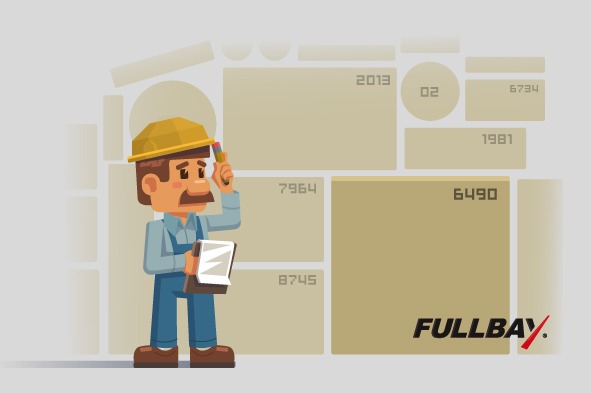Best Practices to Conquer Your Shop’s Inventory

Do you have a love/hate thing going on with inventory? You’re not alone. Most shop owners recognize the need to stock parts, but many don’t want to deal with managing it all. That’s why it’s common to lose control of stock—and diminishing cash flow usually follows close behind. However, what if we told you conquering inventory was as simple as implementing five habits? It will take an adjustment and some discipline at first. But, in the end, you’ll love what getting a grip on stock does to your shop’s cash flow and profits.
1—Carry Only What You Need
Inventory tends to have a negative return, especially if you let it get out of hand. It costs you to buy and store stock that doesn’t sell quickly. Plus, you’ll lose more money to damage, obsolescence, and parts that just walk out the door. It’s all known as carrying costs, and they stifle your cash flow. Overall, not controlling stock costs about 20 percent per year. That’s why making the shift to carrying only what you need is a vital step in conquering inventory.
Admittedly, it can be hard to draw the line on the right amount of stock to carry and there’s no one perfect answer for every shop. Inventory reconciliation is a good place to start in making that decision. It’s a practice that identifies what parts turn over most quickly. Stock those parts and cut back dramatically on ones that sit on the shelf for longer than a month.
It’s practically guaranteed that you’ll find some gray areas, so you’ll have to make some judgment calls on a case-by-case basis. For instance, if you’re going to lose business because you’re out of stock on certain parts, then, yes, it makes sense to invest in them. Of course, you must stock items that turn over regularly. Those are things such as wheel seals, drums, shoes, and supplies for PMs like filters and oil. You can typically wait for things like turbos rather than buying a few and holding onto them for 6 months to a year. Even if you end up paying a delivery fee to get them quick, you’ll recoup that in your markup.
2—Know What You Have
You know what your bank balance is on any given day, right? Well, considering inventory is essentially cash, it makes sense to know what stock you have at all times. Put differently, things get real when you realize that you have to do about $1,000 in work to make up for $100 in lost parts.
Knowing what you have doesn’t simply mean knowing what is physically sitting on your shelf. It requires having a system that tracks your parts from the order through using them on a job. Use POs so you always know what you ordered and who ordered it. There should be leadership and ownership in the shop with everyone understanding parts are money. Therefore, always have someone sign off on receiving parts when orders come in. Segregate stock to make everything easy to find. That’s not only the purpose of conquering inventory, but to help techs be more efficient, too. Also, keep electronic files on all the data from the orders to the receiving confirmations to the invoices and bills so they’ll be easy to find, as well.
3—Count It
In the steps for conquering inventory, this one is a continuation of step 2. You have to count inventory to know what you have, and you must have a process in place for counting everything regularly. At first glance, this task can be overwhelming, particularly at the beginning if you don’t currently proactively manage your stock. However, counting in cycles breaks the big task down into manageable parts that will have you on track pretty quick.
Daily, you should be dealing with parts that have a negative quantity. Sometimes they’re items that turn over so quickly they might get used within minutes of hitting the shelf. Alternatively, there might be a receiving error or other problem. Whatever the issue, negative inventory is something you need to deal with daily because it will be harder to fix a year or more down the road, especially if there are several factors causing it.
As for the rest, you can divide your stock into A-B-C categories:
- A’s are parts that turn over quickly (brake shoes, drums, wheel seals)
- B’s are ones that move a little slower than A’s, but still sell at a “normal” rate (starters, alternators, etc.)
- C’s are slow moving parts that might sell every few months or less frequently
Do all inventory on your tablet so all your data is electronic and you won’t have to enter it again in another system. If you count your A’s monthly, your B’s quarterly, and your C’s twice a year, you’ll always have a good handle on your inventory. Additionally, if you have service trucks, make technicians responsible for doing an inventory on their trucks each week to avoid losing control of stock through your mobile service.
4—Centralize Ordering
Inventory can quickly get out of control if everyone in your shop places orders randomly as needs arise or as the mood strikes. Not only should you have one person in charge of ordering parts, but orders should be centralized. Parts managers should combine orders as often as possible. When a special-order part gets sold on a counter sale and adding it to an order pushes that order over the minimum needed, for example. In fact, any time the parts manager is ordering, he should pool inventory orders with service orders, counter sales, and even across multiple shop locations, if you have them.
5—Make Thresholds Work for You
Most vendors will give you price breaks or free shipping for ordering certain amounts of stock. Many shops order more than they need or fill orders in with nonessentials just to get those perks. However, keeping track of thresholds can make them work to your advantage as you build orders. Just as we mentioned in step 4, taking counter sales and service orders into consideration can often get you over the threshold you need for the pricing and free shipping. Plus, combining these steps often allows you to make orders more frequently to keep that cash flowing.
Conquering Inventory Made Easy
Does the thought of implementing these steps give you anxiety? It shouldn’t—not if you have Fullbay at your service. New features in the software automate all five steps. With Fullbay, you can set thresholds for individual vendors as well as control who can override those minimums. It centralizes ordering by allowing the parts manager to see service orders and compare them to orders in progress from vendors, including viewing orders from multiple vendors. You can even download vendors’ electronic catalogs and import thousands of special-order parts at a time to help you manage pricing and categories within your internal inventory list. Plus, every time you make a regular order, those parts automatically get added to your inventory. Get a handle on your stock—fill in the form below to get the peace of mind and satisfaction of finally conquering inventory.

